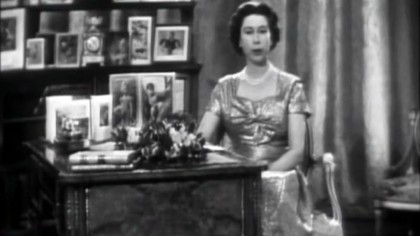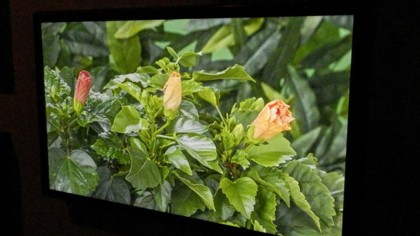HDR broadcasts are coming – but not any time soon
Standards, standards, standards

HDR, or high dynamic range to use its full name, is the most uninterestingly-named interesting technology in televisions at the moment, but to date it's remained exclusive to streaming services and Ultra HD Blu-rays.
4K might have the advantage of bigger numbers, but for our money HDR is going to have a much bigger impact on how good a television looks for the average viewer.
We've got a full guide to HDR if you want an in-depth look at the technology, but the short explanation is that HDR increases the maximum peak brightness of an image, and brings big benefits in terms of how dark a TV is capable of going.
The result is more detail in the brightest and darkest parts of an image, and also leads to nice occasional benefits, such as glints of light that are able to really sparkle because of how bright HDR-powered pixels are capable of going.
HDR's benefits have been so apparent that it's been rapidly adopted by the movie industry (which has included it as a feature in the newly available Ultra HD Blu-ray standard), as well by streaming services Netflix and Amazon Prime Instant Video.
But so far the technology has remained absent from broadcast television. So we went along to the BBC's R&D department in London to find out what progress is being made in bringing high dynamic range to broadcast television.

Streaming has it easy
The short answer as to why streaming services have beaten broadcast to HDR is that comparatively, their content has a much simpler route to get into viewers homes.
Sign up for breaking news, reviews, opinion, top tech deals, and more.
Netflix has its content stored on its own servers. The content is made up of individually accessible on-demand videos, and its users access this content exclusively through Netflix's own website and apps.
In other words, aside from having to rely on ISPs for the delivery of its content, Netflix more or less has end-to-end control of its content.
But when it comes to broadcasters like the BBC, the situation is completely different.
For an example of the nightmare faced by broadcasters such as the BBC, look no further than an international sporting event such as the Olympics.
Although an event like the Olympics is broadcast by dozens of different television providers across the world, the actual events themselves are filmed just once.

What then happens is an organisation such as the BBC takes these live feeds and runs them into its own coverage centres. It adds its own graphics, its own commentary, and it splices this shared footage of the event itself together with its own coverage.
The BBC might cut from highlights of a cycling race which is overlaid with the BBC's own graphics and audio commentary, to a studio segment shot in a BBC studio, to another live event.
At the end of all this coverage the feed needs to then switch to whatever content is next up on the channel, all without a single bit of interruption for the user.
More complicated still is the fact that since the BBC has regional coverage across the UK, these feeds will have to diverge at regular intervals, again without any interruption to the viewing experience.
Streaming is completely different. You browse an interactive menu, select an item to watch, the screen goes black while it loads, you watch a program, and then even if the next show in the season plays automatically the screen still goes black for a moment while the next file is loaded.
After all, when was the last time you were watching a live TV broadcast that went black to load the next show?
If you need any further evidence of how easy streaming is compared to broadcast TV, the BBC told me that the Queens' Speech (a yearly broadcast that goes out on Christmas Day in the UK) was actually available to the public in Ultra HD back in 2014 for people who knew where to look.

Metadata problems
At the core of the problem with bringing HDR as it currently exists to broadcast TV is metadata.
Metadata is the information that surrounds a file that tells it how a system needs to understand it.
Most people come into contact with metadata with their digital music libraries, where it carries details like artist and album names. But it's equally as important with video content where it gives information like what aspect ratio a video needs to be displayed in.
The problem with the HDR standards that currently exist (of which there are two, HDR10 and Dolby Vision) is that they rely on metadata to function, and while metadata is easy to work with in a streaming environment, when it comes to broadcast it's a completely different ball game.
When you're dealing with an international event like the Olympics or the Eurovision Song Contest, it's very difficult to ensure that this metadata will make it from the camera, through to the BBC, and finally to the viewers at home without being compromised.
Not only that, but even when it comes to domestic content, every single program shown on a single channel (including archived content that can date back decades) has to have uniform metadata, otherwise it's impossible to switch seamlessly between them.
Backwards compatibility
The other issue with broadcast technology is that a broadcaster has absolutely no idea what kind of television the viewer's using at the other end.
Someone might be using an Ultra HD HDR screen, an Ultra HD SDR (standard dynamic range, or non-HDR) screen, an HD set, or even (heaven forbid) an old fashioned standard definition television.
Whereas streaming services can switch between different feeds depending on what the viewer's system is capable of (bandwidth being an obvious example), broadcasters aren't so lucky.
The result is that broadcasters somehow need to find a way to cram in all that HDR data into the transmission without it confusing the hell out of a non-HDR TV.

Hybrid Log Gamma
The solution that the BBC has arrived at along with NHK (the BBC's equivalent in Japan) is the catchily-named BBC-NHK-HLG, or 'Hybrid Log Gamma'.
Hybrid Log Gamma (or HLG for short) is a metadata-free solution that solves the problems that existing HDR formats would experience if they were used on broadcast TV.
HLG is a specification that was defined over a year ago, but more recently the ITU published two approaches for HDR interchange between broadcasters. It included both Hybrid Log Gamma, as well as a competing format called Dolby-PQ.
The difference between the two standards comes down to a technical matter of whether they're display-referred or scene-referred (HLG is the scene-referred one), but for the purposes of this explanation all you need to know is that HLG contains none of the metadata problems of HDR10 or Dolby-Vision, and is also fully backwards compatible with existing SDR broadcasts.
So now that HLG has been defined, we should see a BBC HDR channel within a couple of months right?
Well as you can probably guess, nothing's that simple when it comes to broadcast technology.

The problem with encoders
First is the fact that HLG is an HDR standard, and work still needs to be done defining various delivery standards for the new content, as well as standardising these technologies worldwide.
But there's also a bigger problem when it comes to live broadcasts - these more complicated images are very difficult to encode in real-time.
This isn't a problem for streamed content, because in effect Netflix can afford to spend hours encoding a single frame if it's particularly complex.
But in a broadcast scenario, a frame needs to be encoded literally every 20ms, and current encoders aren't up to task.
Secondly, an encoder can't keep up with a live broadcast. It will drop behind, and when it comes to live TV there's no chance for a feed to catch up.
Broadcast HDR still has a long way to go
So in a nutshell, the BBC has a big job on its hands when it comes to bringing the wonders of HDR to broadcast television.
The fact is that there are a lot of different links in the pipe that connects your television to the BBC's cameras, and getting all of these links in-sync will take some time.
The good news is that HLG is starting to appear in HDR TVs this year, and both the DVB and ATSC (the bodies that determine broadcast standards for Europe and the USA respectively) are considering whether to include the technology in their next generation of standards later this year.
So the next time you curse the BBC for being late to the table when Netflix and Amazon Prime have made it look so easy, just remember the massive challenge that new technologies present to an organisation of its size.

Jon Porter is the ex-Home Technology Writer for TechRadar. He has also previously written for Practical Photoshop, Trusted Reviews, Inside Higher Ed, Al Bawaba, Gizmodo UK, Genetic Literacy Project, Via Satellite, Real Homes and Plant Services Magazine, and you can now find him writing for The Verge.